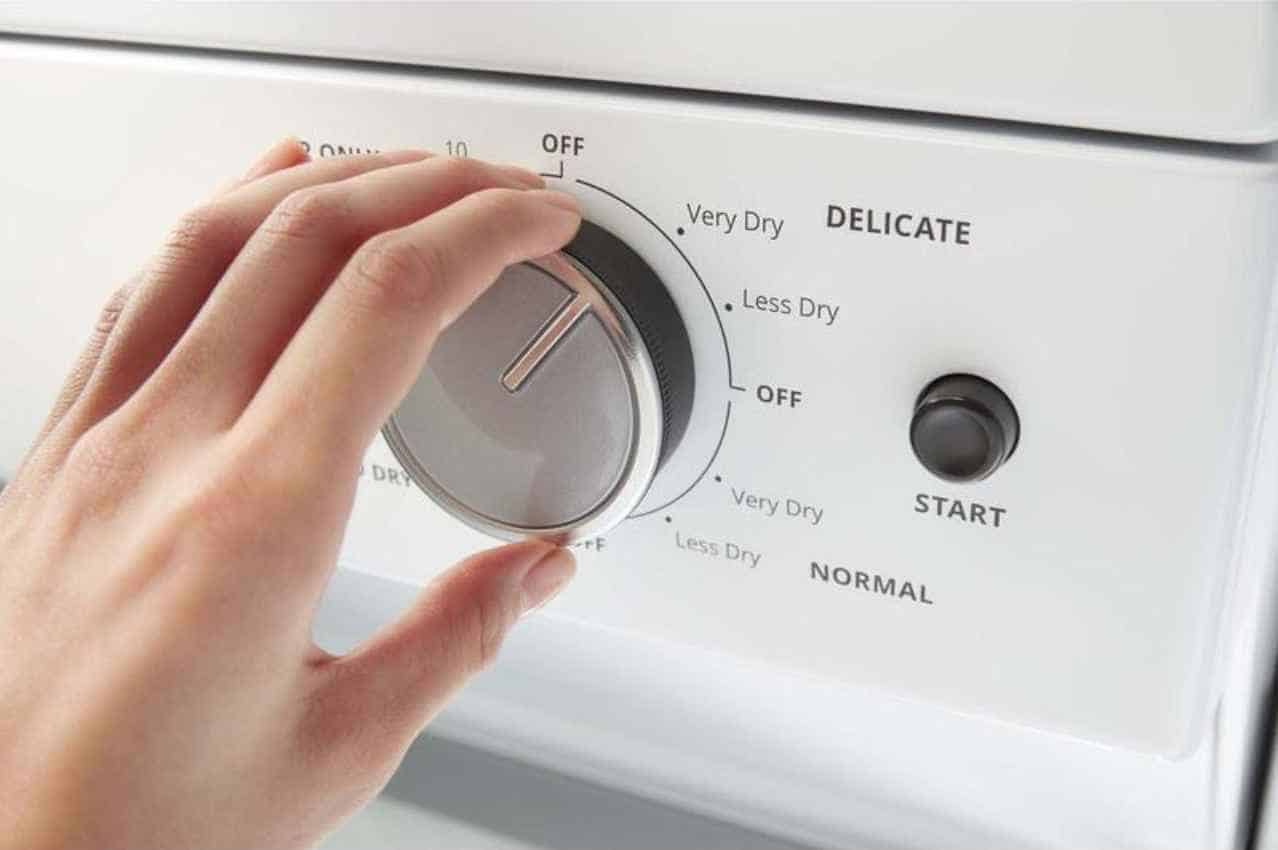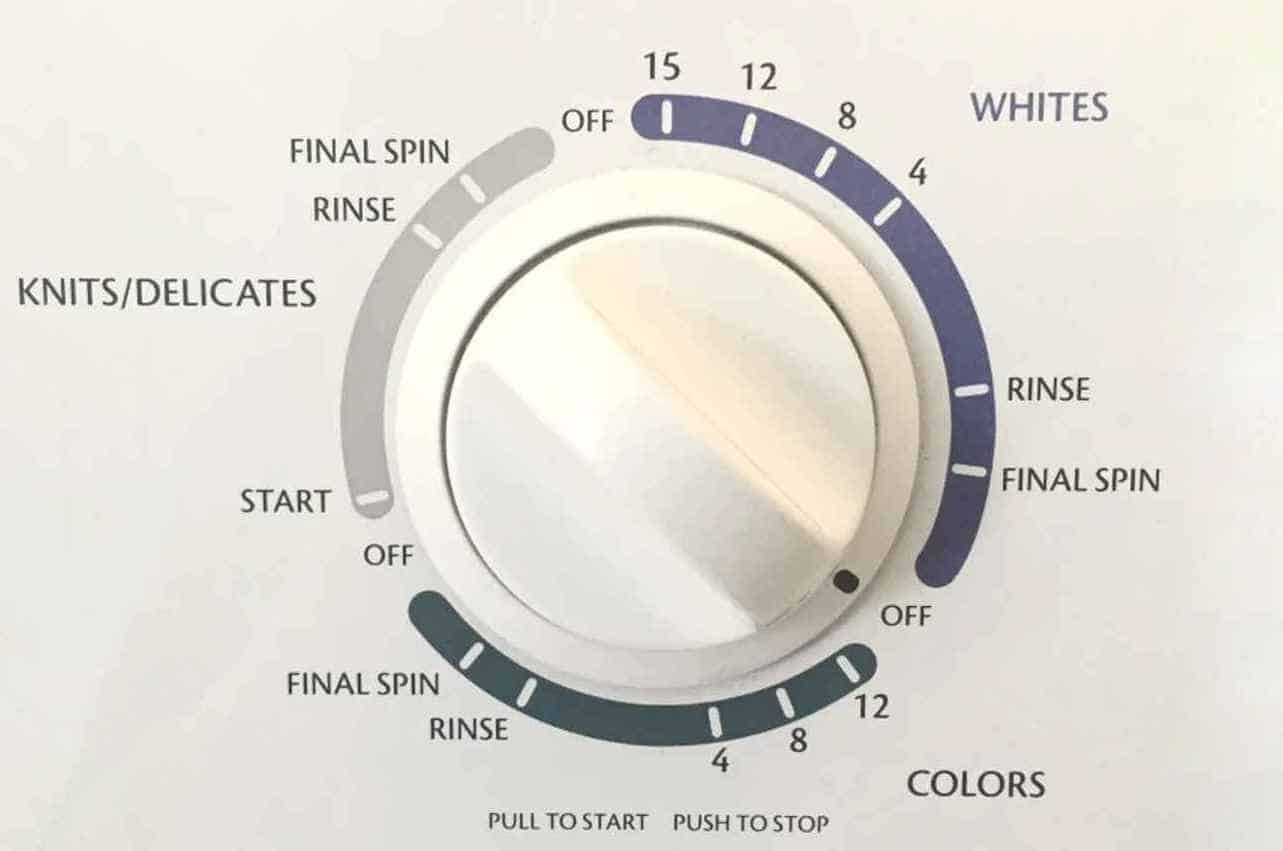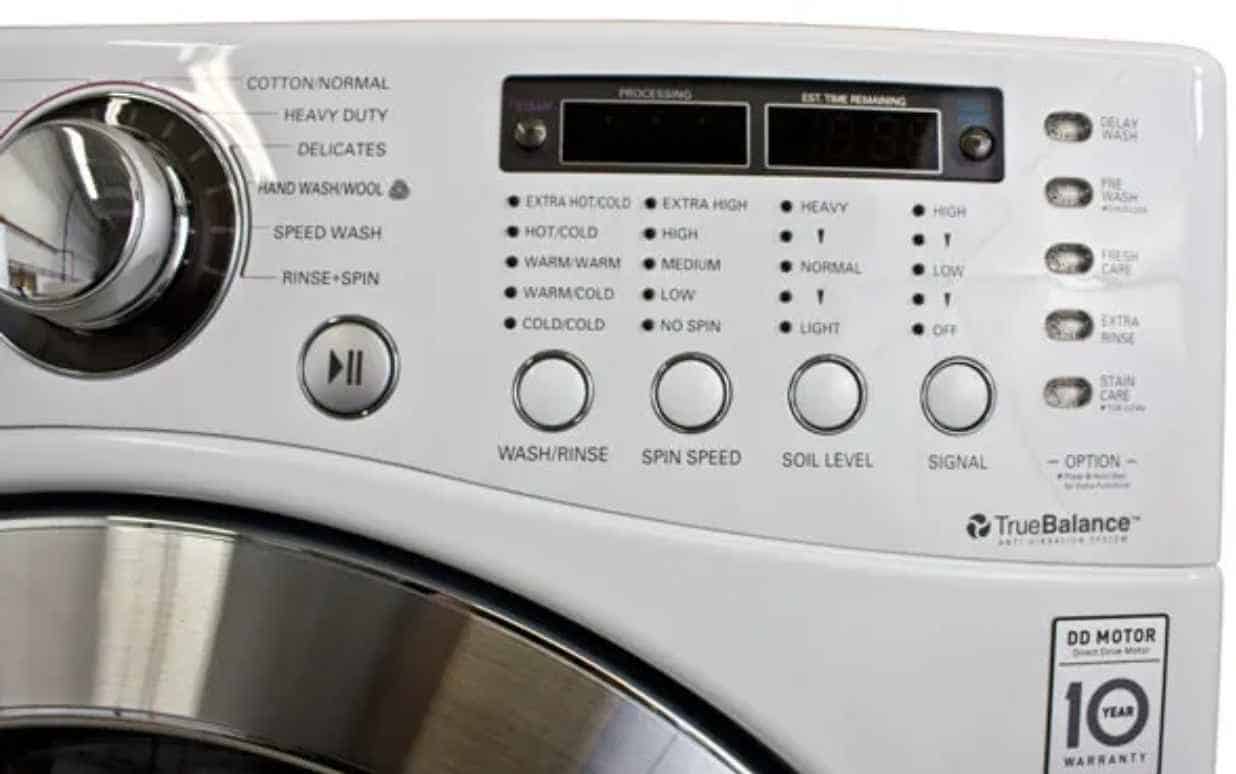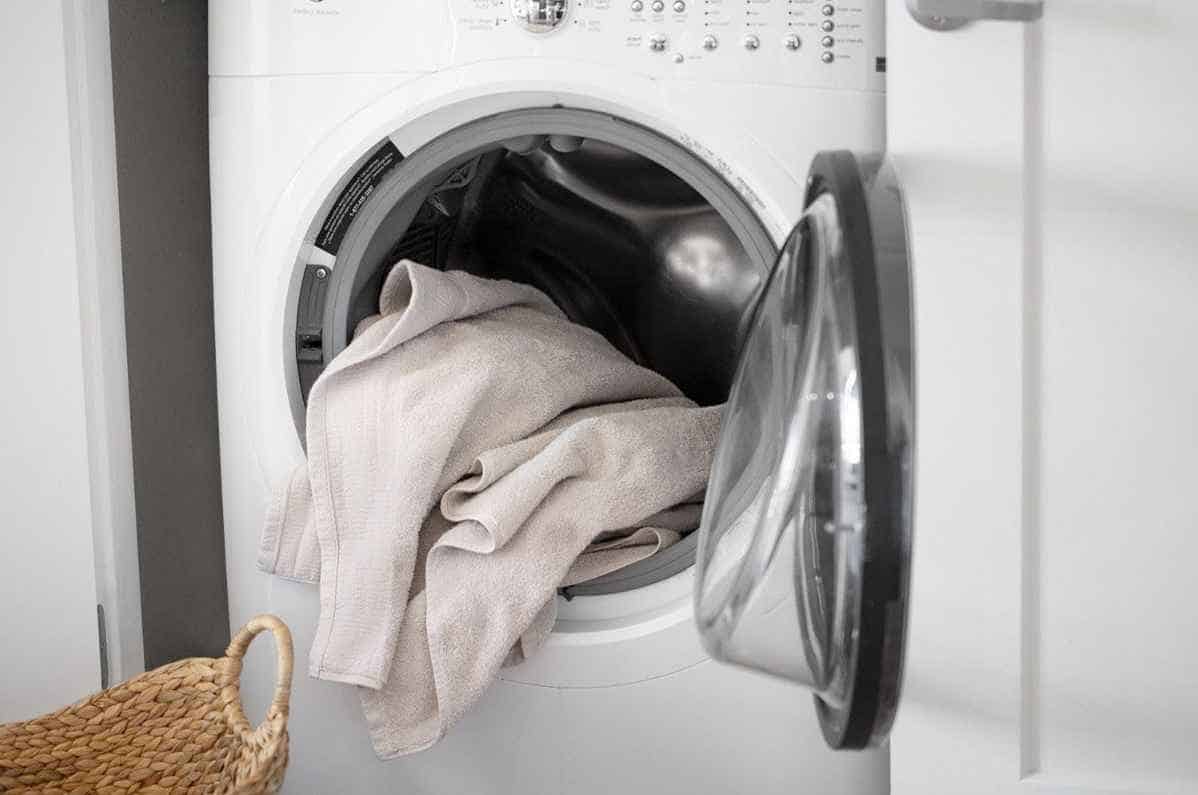Sometimes we get so excited with the newly purchased appliances that we forget about the manual. And we completely understand why most have averse to reading it.
It is too long and can be esoteric for some readers. But let’s be clear. Choosing the proper wash cycle for your clothes is something you should not ignore.
While some of you may be familiar with the standard wash cycles, it still pays to be knowledgeable about the other additional settings. Here, we will share the different wash cycles, the types of clothes suited for them, and other factors to consider before running the washer.
What Does Wash Cycle Mean?
Before we delve into different settings, let us first understand the meaning of the wash cycle. Wash cycles are built-in programs that help you set the right temperature and spin value. They may have different settings, but every cycle follows three basic steps: wash, rinse, and spin.
- Wash: the washer is filled with water and detergent to clean the soiled clothes. Stains and dirt are removed on clothes by an agitator or impeller.
- Rinse: the used water and soap start to drain. The drum is filled with new water to rinse the clothes.
- Spin: the drum undergoes a high-speed spin to remove the excess water on the clothes and for easier drying.
Although, some washers have a rinse+spin setting that skips on the wash. This program cycle comes in handy if you hand wash your clothes and then would like to spin them. Or if you want to re-rinse the clothes to get off the excess detergent.
Getting To Know The Different Washing Machine Cycles
There are different types of washing machine cycles depending on the brand. Some may have hand wash settings others may have a synthetic wash program. While these vary per manufacturer, three program settings are commonly available in all washing machines. The standard washing machine cycle settings are:
- Regular wash cycle
- Permanent press cycle
- Delicates wash cycle
Conventional or top-loader washing machines are the pioneering styles of washers. And while it saved us from hand washing tons of clothes, it only offered a limited amount of settings, especially on the temperature side.
Today, washers are quickly developing and continuously creating built-in programs. Aside from the standard washing machine cycles, washers now have multiple additional programs to explore. Here are additional wash cycles that we will discuss thoroughly later:
- Hand wash cycle
- Quick wash cycle
- Pre-wash cycle
- Rinse and spin cycle
- Heavy-duty wash cycle
For sure, many of you have already seen these settings. But are you familiar with its features and characteristics? If not, we are here to help you understand it more clearly.
If you want to know more about how washing machines’ functions are developed over time, watch this video:
Standard Washing Machine Cycle Program
For every wash cycle, you need to consider its purpose, what clothes suit, and how it cleans. It may seem a lot, but the program’s name already gives away its functions. So take one cycle at a time, and optimize your washing machine use after.
- Regular or Normal Wash Cycle: A regular wash program is the most popular cycle for most washing machine users. It helps remove stains and clean heavily soiled clothes. For this program, everyday clothing with strong fabric is suitable. Examples of these are socks, underwear, and white shirts. Regular wash cycle runs at high speed and hot water, helping remove odors and dirt.
- Permanent Press Cycle: Wrinkles and creases are the common problems we encounter in clothes after laundering. But this program could be the answer to our pressing concerns (pun intended). From the name itself, permanent press loosens the wrinkles and creases on clothes. Suitable clothes for this program are those made with synthetic or semi-synthetic fabrics. Examples are button-down shirts and pants. Avoid using it in delicate fabrics like silk and lace. The permanent press runs a lower spin with warm water to wash and cool water to rinse.
- Delicates Wash Cycle: Think of this program as how a gentle human would wash and clean your favorite clothes. It sounds assuring, right? The delicate wash cycle gently cleans clothes that have light and thin fabrics. Silk, wool, and clothes with gentle wash on the tag are a few examples. A delicate wash cycle runs a low and slow spin with warm and cold water.
Additional Wash Cycle Options
If what you are looking for does not fall into any category mentioned above, then here are other wash cycle programs to explore. Check out these five programs and see how they can transform your laundry routine.
- Hand Wash Cycle: Similar to a delicate cycle, the hand wash program offers a gentle wash for easily damaged clothes. The only difference is the speed and temperature. The latter has a faster spin but with a lower temperature. So if you want to take extra precautions with your clothes, the hand wash cycle is the way to go.
- Quick Wash Cycle: For those who want to save time and energy, having this program is an edge. But be reminded that there are a few setbacks when using this. Washing delicate fabrics and heavily soiled clothes should be avoided when using this program. Quick wash runs a fast cycle and dry, so ensure that the load is light.
- Pre-Wash Cycle: The pre-wash cycle is a savior when it comes to cleaning dirty clothes. If you have a child who always goes home with dirty clothes, never overlook this program. Pre-wash removes odor and dirt before the regular wash cycle even runs. Although, some program does not allow pre-wash, like rinse+spin or delicates.
- Rinse And Spin Cycle: The rinse and spin cycle is handy, especially if you hand wash clothes initially or want to remove moisture. It uses clean water without detergent to rinse the clothes, then runs a high-speed spin to dry the laundry. Rinse and spin are also compatible with swimwear items for moisture removal.
- Heavy Duty Wash Cycle: Tough stains and stubborn dirt hiding in the unnoticed edges of the clothes need some extra good scrubbing. But spare your hands from all the cleaning, and use this program instead. Heavy-duty wash cycle combines extra wash, heated water, and high-speed spin for a deeper clean. And with a powerful cleaning comes a long waiting time as well. The cycle can last about an hour or two, depending on the setting.
Factors To Consider Before Starting A Washing Machine Cycle
Choosing the proper washing machine cycle is one thing, but considering other factors can take your laundry practice to the next level. Today, we will share some washing tips about temperature control and maximum load.
Washer Temperatures
Regulating the temperature of a washer helps prevent clothes from shrinking and fading. Check out the table for the proper temperature setting and the suitable garments for each.
| Temperature | Soil Level | Examples |
| 130° Fahrenheit or higher | For heavily soiled white fabrics like cotton and linen | Teacloths, towels, tablecloths, and sheets |
| 90 to 110° Fahrenheit | For normally soiled, colorfast garments in linen, cotton, or synthetic fibers. Slightly soiled white cotton. | Shirts, nightdresses, pajamas, and underwear |
| 60 to 80° Fahrenheit | For delicate items, mixed laundry includes synthetic fibers and woolen. | Net curtains, silk, and clothes with cold water on the tag |
Here are some tips when setting the temperature: First, sort the laundry by following the wash code symbols on each garment label. Also, check the washing instructions for better understanding. Sort the laundry into whites, coloreds, synthetics, delicates, and woolens. Once done, you can set the recommended temperature for each category.
Maximum Loads
Different situations come when loading laundry in the washer. It may be too light or overloaded. But most of the time, it is the latter that we encounter. Following the recommended load makes the most efficient use of water and energy. Here are some general rules to follow when loading a washer.
| Clothes Load | Quantity |
| Cotton, linen | Drum full but not too tightly packed |
| Synthetics | Drum no more than half full |
| Delicate fabrics and woolens | Drum no more than one-third full |
Remember that this is just a general guideline and may vary based on the washer unit. If you want to be specific with the weight, it is best to check the user manual.
Take this tip when deciding on the load: For heavily soiled laundry, reduce the load size for optimal and deeper cleaning. It gives the washing machine an upper hand when removing dirt and stains.
Take Away
Doing laundry is a part of our day-to-day activities. But little did we know that there is still a lot to learn and discover. And one of which is choosing the right wash cycle for your clothes.
Different wash cycle programs built into each washer are beneficial on each own. There are programs suited for delicate fabrics and those appropriate for heavily soiled clothes. It can be tedious sorting out clothes and aligning them with the cycle. But keep in mind that going through all of this can save you a couple of clothing.

Jessica Oliver is a fashion enthusiast with more than ten years of experience in the industry. She previously managed her own clothing store in New York before becoming a mother of three. With a passion for sustainability and a desire to share clothing care and recycling tips.






